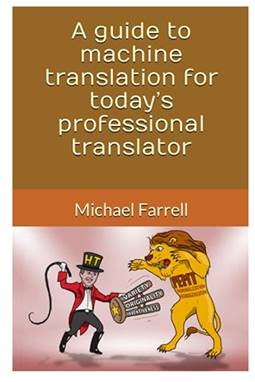Written by: Jenny Zonneveld
Published: 23-01-2024

SENSE members met under the Zuid-Holland SIG umbrella at Joanna Bouma’s house in The Hague on 16 November 2023. While we enjoyed Joanna’s drinks and snacks, we had a lively discussion about the merits of machine translation.
Some of us have clients who use DeepL as a matter of course, and then send the text to an editor or translator for correction. We agreed it is essential to have the original source text for these tasks, so you can refer to it when checking a translation. Then you can spot where the human translator or machine translation has plugged in the ‘necessary variation’ – which refers to machine translation’s penchant for inserting synonyms when consistent terminology is required.
DeepL shortcomings
SENSE member Marilyn Hedges has significant experience of post-editing DeepL translations and shared her observations and some of the issues she and a colleague have identified. These include the following:
- Inconsistent terminology between adjacent sentences.
- Inconsistent use of quotation marks.
- Poor translation of the more creative source texts; DeepL appears to perform better with factual documents.
- DeepL is not very good with headings, especially those with clever alliteration, and the same goes for less well-known idiomatic expressions.
- DeepL gets easily confused if the source text contains any typing errors.
DeepL Pro
DeepL Pro, the paid version of DeepL, offers some extra features. You can upload glossaries and access the editing tool known as DeepL Write. Also, in the translation and editing windows there’s an option to listen to both the source text and the translated or edited texts.
Tips and tricks
There are other useful features in the browser version and DeepL for Windows app, which you can invoke using the keyboard shortcut Ctrl+C+C:
- Access dictionary entries for the source text by simply clicking on a word.
- See alternatives and synonyms in the target text. When you select an alternative, DeepL rewrites the sentence using your selection and will also offer to add this to the glossary.
Mysteries of DeepL
It is unclear whether DeepL translates sentence by sentence or looks at larger sections of text. I have experimented and observed varying results from the different ways of using DeepL:
- In a browser, copy and paste a single word, sentence or longer chunk of text.
- In the app, copy and paste a single word, sentence or longer chunk of text.
- In a translation tool such as MemoQ, Trados, and Déjà Vu.
- Translating an entire document, either in the browser or desktop app version.
Optimizing workflows
We talked about different workflows for incorporating or avoiding machine translation in our work and how this affects our consistency and creativity. We discussed how best to help clients who send a machine-translated document for post-editing. Depending on the nature and quality of the source text and its intended use, it may be quicker and cheaper for the client to start the translation from scratch. We can explain why this is the better option as clients may not be aware of the shortcomings of machine translation and why it makes mistakes.

Types of errors in automated translations
Machine translation expert Michael Farrell gives a good explanation of errors in his book ‘A guide to machine translation for today’s professional translator’. He lists these errors as lexical errors, syntactic errors, grammar errors, errors due to lack of cultural knowledge, stylistic errors, human errors (in the source text) and technical errors.
ChatGPT
The next topic we discussed was the use of ChatGPT as a translation tool and the reasons why the AI text generator is prone to ‘hallucination’. Simply explained, this is because the algorithm for selecting the next most common word or phrase in the sequence contains a randomizer, which sends it off on a tangent. This is similar to machine translation engines inserting the ‘necessary variation’ mentioned above.
Next meeting
At the next Zuid-Holland SIG meeting, on Monday 29 January 2024, we will discuss AI, editing and copywriting. Do join us if you can. Dogs are welcome!
|
Blog post by: Jenny Zonneveld Website: www.translatext.nl LinkedIn: jennyzonneveld |

